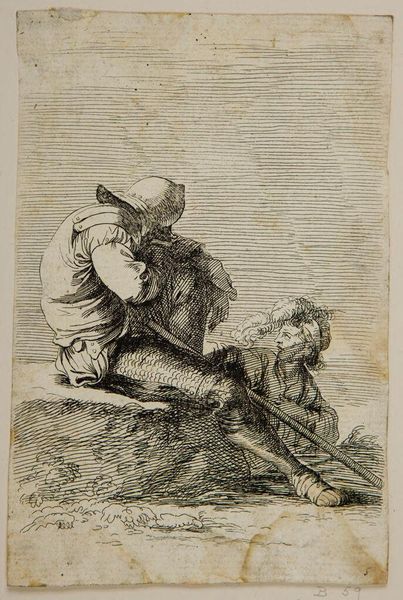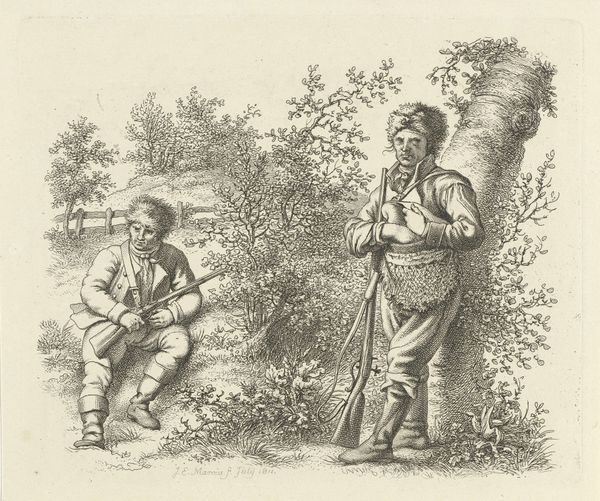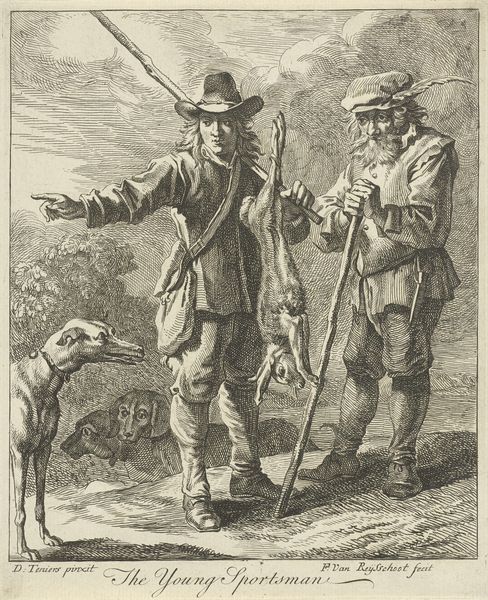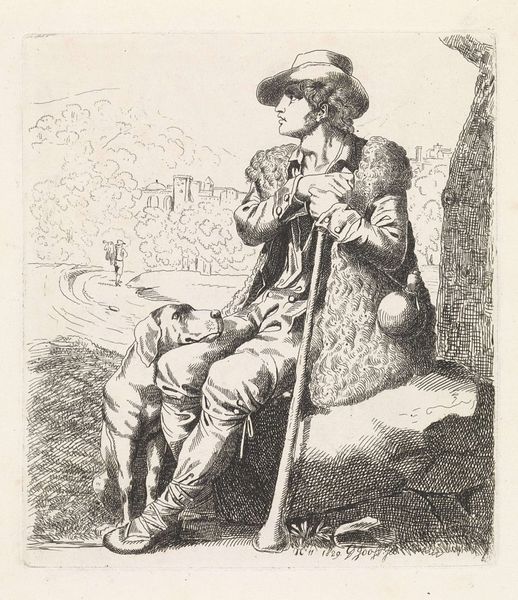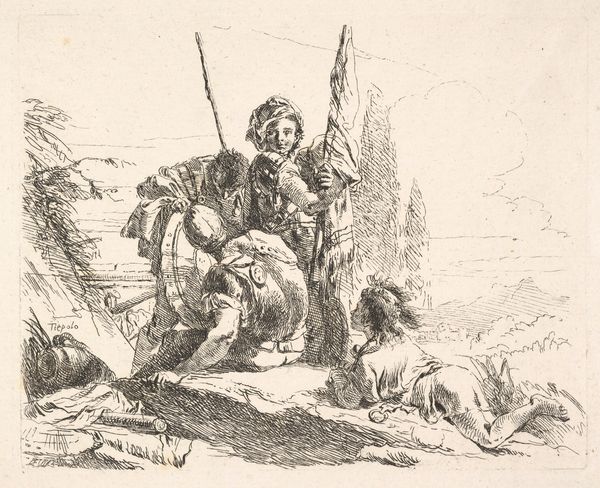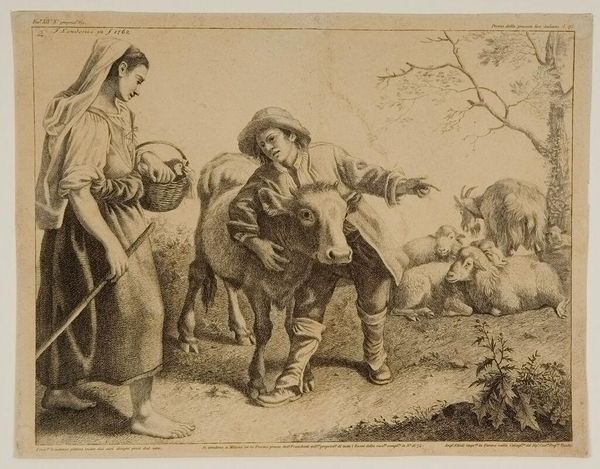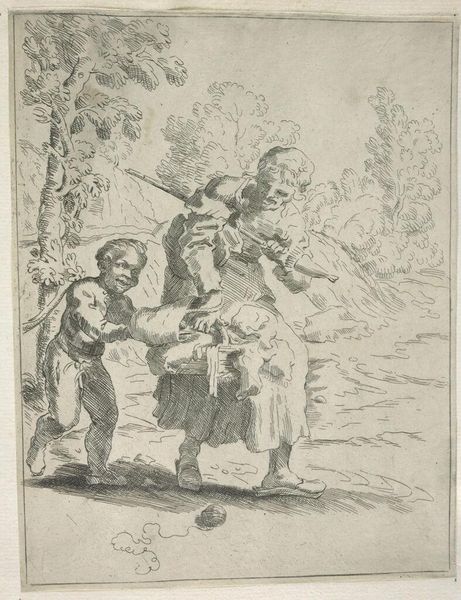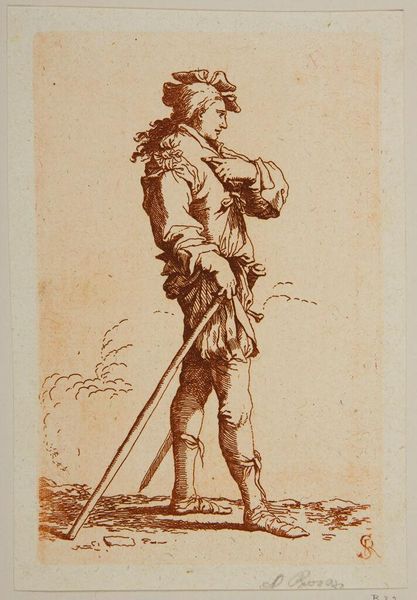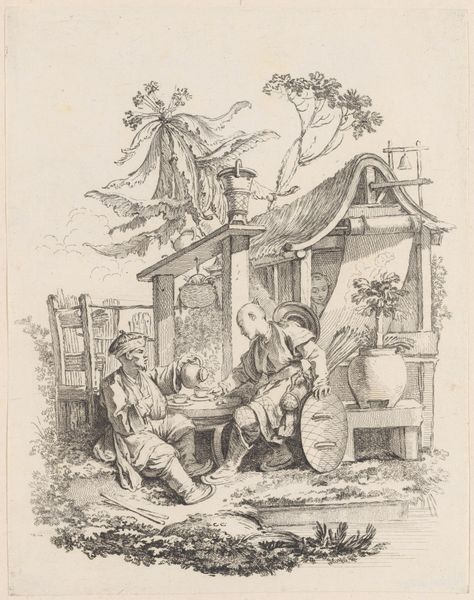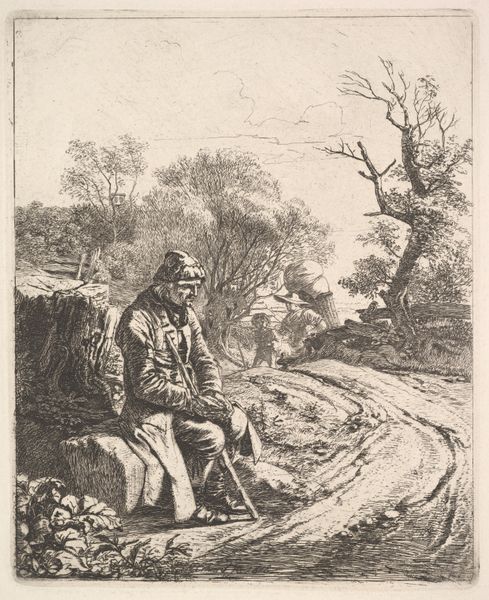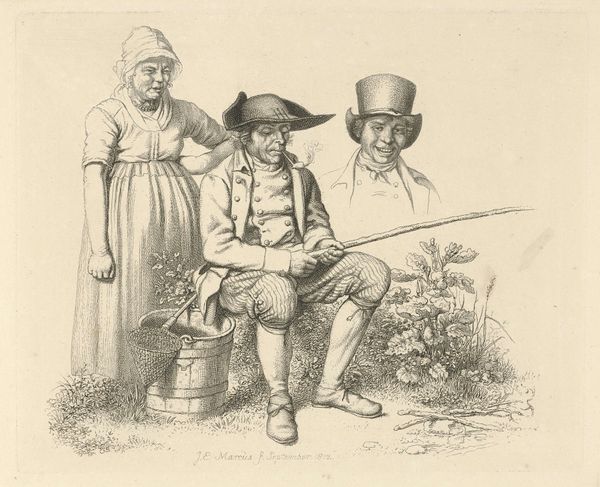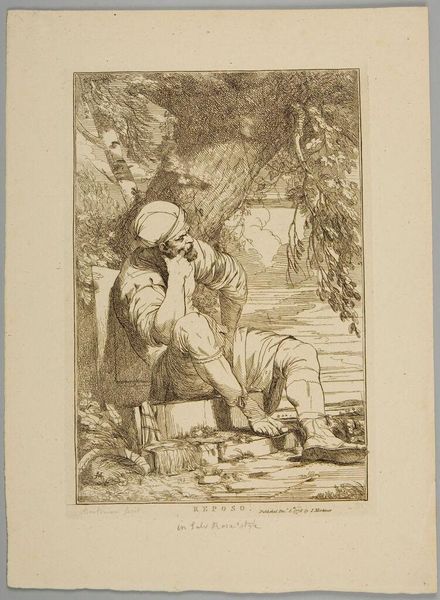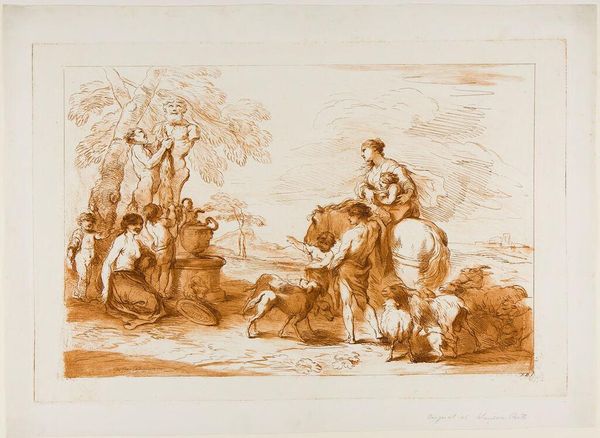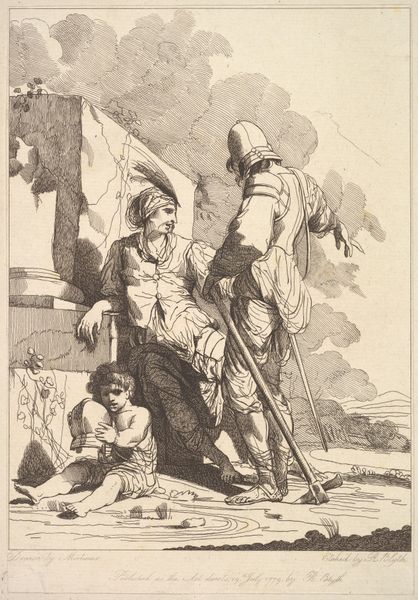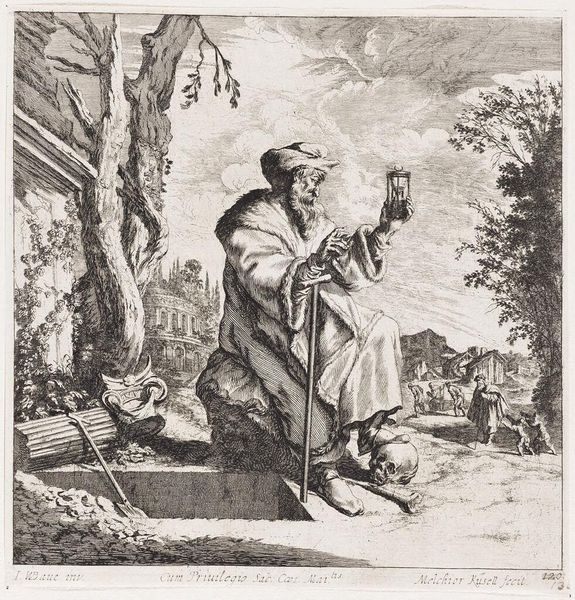
watercolor
#
landscape
#
figuration
#
oil painting
#
watercolor
#
child
#
costume
#
watercolour illustration
#
genre-painting
#
watercolor
#
realism
Dimensions: 53.3 x 35.6 cm
Copyright: Public domain
Curator: This is Enrico Nardi's "Peasants Pausing on a Country Lane," created in 1881, employing watercolor as its primary medium. It's currently held in a private collection. What strikes you initially about it? Editor: It has a muted, nostalgic feel. Almost sepia toned. I’m getting a strong sense of weary labor, observing their stance and somber attitude on what is a simple rural environment. Curator: Genre paintings such as this one gained popularity during the late 19th century, reflecting an interest in depicting everyday life. The costumes they wear are striking: Could you tell me more about it? Editor: Yes, and while ostensibly representing everyday life, it idealizes the simplicity of the peasant life. These traditional costumes speak volumes – highlighting the region’s cultural identity while perhaps romanticizing rural work conditions. We see a young man, a lady with traditional head covering and colorful decorated clothes and another yound man apparently working or kneeling to find something. Curator: Precisely. The attention to detail in their clothing indicates Nardi’s awareness of representing a specific group. We must not overlook the perspective. In this instance, Nardi gives visibility to a sector generally unmentioned and neglected by mainstreams. It also reminds to Manzoni and “I Promessi Sposi”, where this costume is well explained. Editor: What’s compelling is not merely what’s displayed, but what’s absent. Is there any reference for what the people portrayed were living during the era? Because “peasant life” can also be synonym of social marginalization in a rapidly industrializing world. Are we appreciating it merely for its aesthetics, or does it prompt reflection on the socio-economic disparities of that period? Curator: Indeed, engaging with the work on this level moves beyond merely observing into questioning power structures inherent within the Italian culture of the 19th century. What's shown and what is not shown shapes public perceptions. Editor: Yes! By revealing these absences and tensions, this artwork ceases to be only a relic of the past. We transform the piece into a starting point for modern discourses on gender, class, identity, and labor. Curator: A thoughtful perspective, bringing it into contemporary discourse in ways Nardi likely never envisioned, isn't it? Editor: Absolutely. And by thinking critically we can discover a renewed relationship with it, giving rise to transformative and engaging artistic exchanges.
Comments
No comments
Be the first to comment and join the conversation on the ultimate creative platform.
